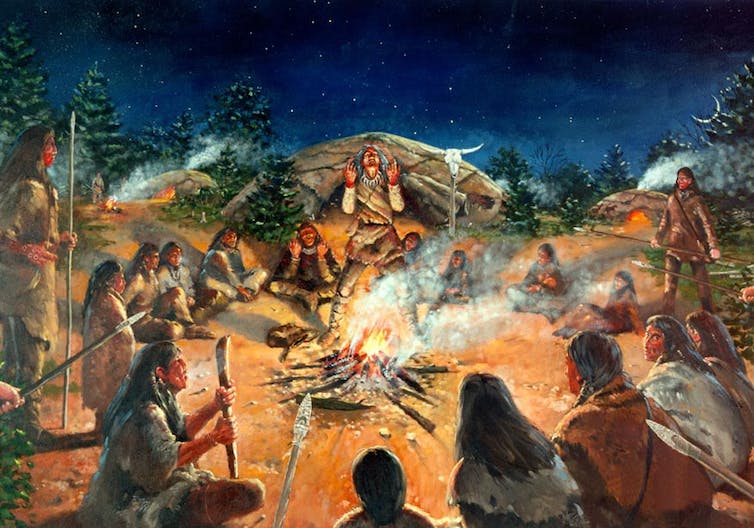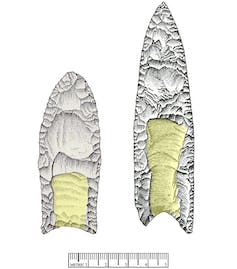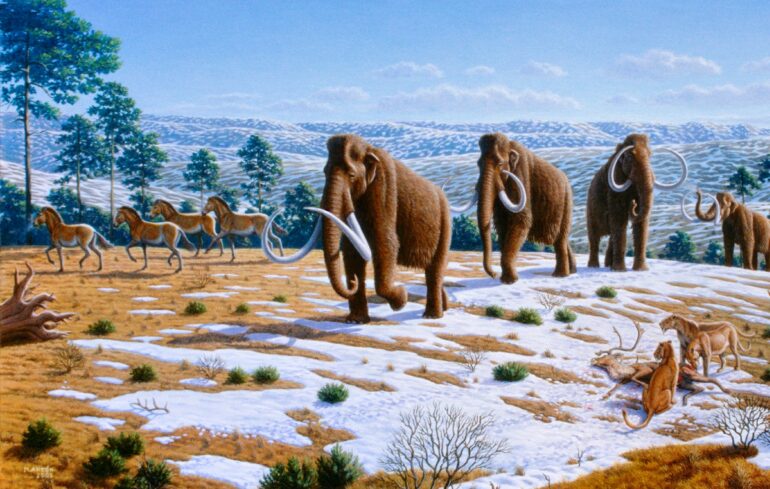The earliest people who lived in North America shared the landscape with huge animals. On any day these hunter-gatherers might encounter a giant, snarling saber-toothed cat ready to pounce, or a group of elephantlike mammoths stripping tree branches. Maybe a herd of giant bison would stampede past.
Obviously, you can’t see any of these ice-age megafauna now. They’ve all been extinct for about 12,800 years. Mammoths, mastodons, huge bison, horses, camels, very large ground sloths and giant short-faced bears all died out as the huge continental ice sheets disappeared at the end of the Ice Age. What happened to them?
Scientists have pointed to various potential causes for the extinctions. Some suggest environmental changes happened faster than the animals could adapt to them. Others posit a catastrophic impact of a fragmented comet. Maybe it was overhunting on the part of humans, or some combination of all these factors.
One of my major interests as an archaeologist has been to understand how the earliest Paleo-Americans lived and interacted with megafauna species. Just how implicated should humans be in the extinction of these ice-age animals? In a new study, my colleagues and I used a forensic technique more commonly used to identify blood on objects at crime scenes to investigate this question.

Clovis hunter-gatherers lived in small, mobile groups, likely following animal migrations over long distances.
Martin Pate/Southeast Archeological Center, National Park Service
Testing stone tools like murder weapons
Archaeologists have uncovered a sparse scattering of stone tools left at the campsites of Paleo-American Clovis hunter-gatherers who lived around the time of the megafauna extinctions.

Early Paleo-American Clovis points (left) and Middle Paleo-American redstone points (right) have a distinct fluted shape, highlighted in yellow, likely designed to facilitate hafting onto a spear or knife handle for use in hunting and butchery.
Darby Erd
These include iconic Clovis spearpoints with their distinctive flutes – concave areas left behind by removed stone flakes that extend from the base to the middle of the point. People most likely made the points this way so they could easily affix them to a spear shaft.
Based on sites excavated in the western United States, archaeologists know Paleo-American Clovis hunter-gatherers who lived around the time of the extinctions at least occasionally killed or scavenged Ice Age megafauna such as mammoths. There they’ve found preserved bones of megafauna together with the stone tools used for killing and butchering these animals. These sites are crucial for understanding the possible role that early Paleo-Americans played in the extinction event.
Unfortunately, many areas in the Southeastern United States lack sites with preserved bone and associated stone tools that might indicate whether megafauna were hunted…


